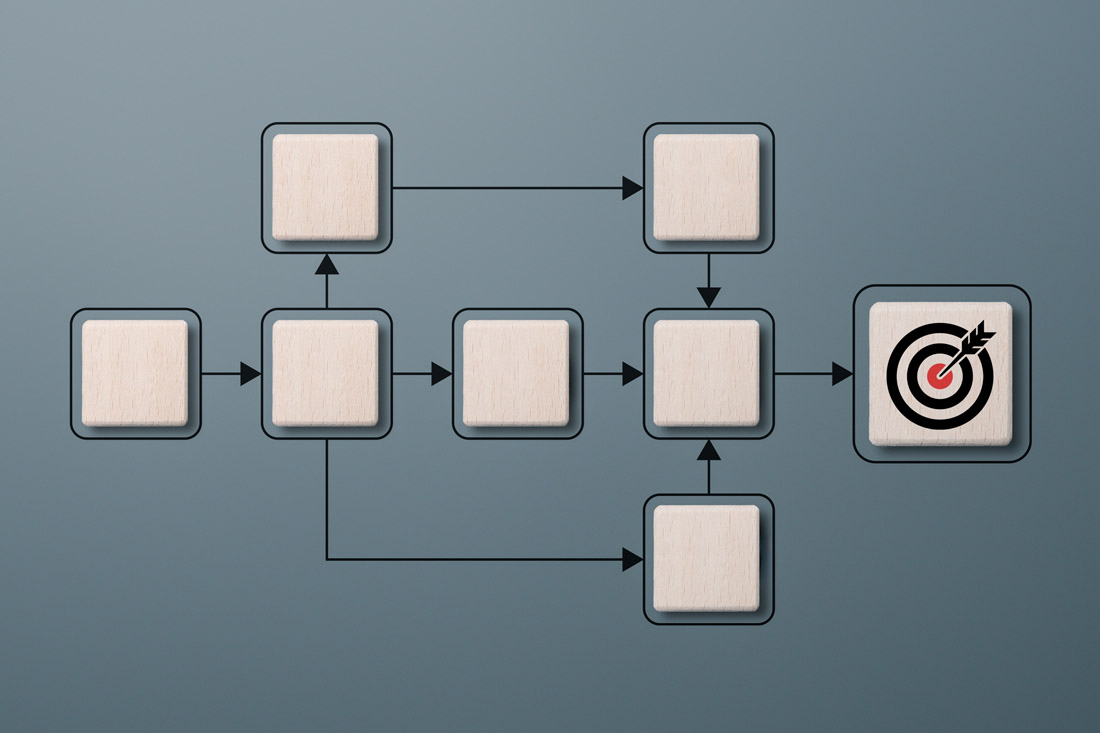In business leadership, two critical terms often come up: business process management (BPM) and BPM workflow. While these concepts may appear similar at first glance, they actually represent distinct practices.
To help you understand the differences, we’ll explore both areas – what they are, why they matter and how to conduct both.
What is business process management (BPM)?
Business process management (BPM) is the practice of analyzing and optimizing end-to-end business processes to streamline operations and improve performance.
Business operations consist of interconnected processes that must work together in harmony for a company to succeed. However, many companies struggle with fragmented systems, manual interventions and inefficiencies that hinder overall performance. Business leaders use BPM to evaluate these processes as a whole to uncover bottlenecks, eliminate redundancies and pinpoint opportunities for improvement.
For example, BPM for a manufacturing company would look at the entire productive timeline to figure out how to increase output. This could involve setting up automated deliveries of raw materials once stock reaches a low threshold, which would ensure the facility is never left without the necessary resources. BPM could also integrate quality control checks at various stages throughout production, rather than just at the end, so teams can detect defects early and reduce costly rework.
BPM improves end-to-end processes by taking a high-level view of operations.
What is BPM workflow?
BPM workflow is a granular approach to optimize individual tasks within a business process. While BPM focuses on end-to-end processes with multiple workflows, BPM workflow focuses on improving a single workflow in greater detail.
For example, BPM workflow would take the example of automating ordering at a manufacturing company outlined above a step further by finding the best threshold for each material type based on usage and material lead times. An individual workflow might include a higher reorder threshold for a heavily used material that takes longer to procure.
BPM workflow focuses on optimizing each task within a business workflow to improve efficiency and quality at every step.
Differences between BPM and BPM workflow
The key differences between business process management (BPM) and BPM workflow include:
| BPM | BPM workflow | |
| Focus | Managing end-to-end processes across departments and functions | Singling out individual tasks |
| Goals | Improving productivity and efficiency by refining business processes as a whole | Enhancing efficiency and quality of each individual task within a process to ensure smooth execution |
| Scope | Broad approach, analyzing and optimizing organizational processes that span multiple functions | Narrower approach, concentrating on details of a single workflow or task to streamline operations at a granular level |
| Timeframe | Long-term strategy for continuous process improvement across an organization | Shorter timeline addressing immediate task-level efficiency to improve day-to-day operations |
| Complexity | Analyzing complex, interdependent processes and aligning them with organizational goals | Managing and fine-tuning individual tasks, which are usually simpler |
Components of BPM and BPM workflow
4 steps for proper business process management
The essential steps for effective business process management include:
- Identification: This is the initial step of BPM, where you define business processes — both the ones already in place and the ones you need to build. How do they align to your organization’s goals? Who are the key stakeholders? What activities do they include?
- Analysis: Once you identify specific processes, the next step is to analyze them. Use software to identify bottlenecks, inefficiencies and areas for improvement.
- Design and implementation: Next, map out the sequence of activities you need to optimize processes. Define roles, assign responsibilities and establish performance benchmarks. Then use the appropriate tools and technologies to put everything in place.
- Monitoring and optimization: Continuous improvement is a fundamental aspect of BPM. Use workforce analytics to track the performance of your processes in real-time so you can adjust and refine.
3 steps for effective BPM workflow
While BPM focuses on overarching processes, BPM workflow coordinates the individual tasks within each process. The key elements of BPM workflow include:
- Assignments: First, ensure each task is assigned to the right person or team based on skills, availability and current workloads. This will minimize delays and make the most of existing resources.
- Tracking: Use a workflow management system to monitor the progress of tasks in real-time. Tracking status, completion dates and approval processes with workflow automation reduces the risk of miscommunication and missed deadlines.
- Escalation: When a task is delayed, find out why. Then discuss any unresolved issues with all parties involved to address roadblocks.
Example of BPM and BPM workflow
Consider how a sales team functions in any business. Agents may have to find new leads, reach out, follow up, create pitch deliverables and coordinate paperwork to secure new deals.
BPM would consider the sales process as a whole to determine if all steps are necessary. For instance, the company might find that time spend following up with people who don’t respond isn’t worth the investment or that it’s better to have accounting coordinate closing paperwork instead of sales agents.
BPM workflow would examine a specific process, such as how agents find new leads and aim to reduce how much time they spend doing so. This could lead to investing in better research tools, purchasing a list of leads from providers or creating a referral program.
BPM and BPM workflow are both ways to streamline and improve operations. The main difference is BPM considers several workflows on a larger scale while BPM workflow considers tasks individually.
Improve BPM and BPM workflow with ActivTrak
Business process management and BPM workflow workflow management are equally important — don’t make the mistake of choosing one over the other.
If you’re looking for a reliable way to optimize end-to-end business processes and individual workflows, ActivTrak can help. Schedule a demo to discover the insights you’ll gain with our workforce optimization software.





